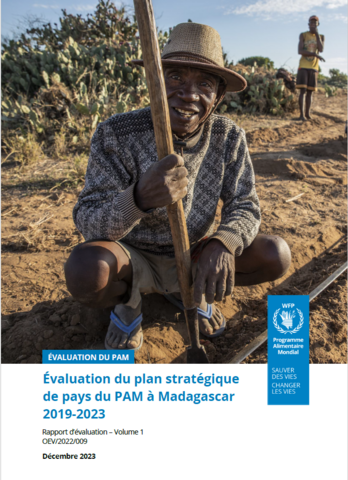
The evaluation recognizes the strong efforts undertaken by WFP to achieve a good level of results during one of the most tumultuous and crisis-affected periods in Madagascar. WFP is a key player in the humanitarian response in Madagascar and is the partner of choice for many donors, especially for crisis response and rapid-onset hazards such as cyclones and floods. However, the geographic targeting of some WFP activities does not reflect the entire situation of poverty and malnutrition in the country. WFP's achievements are due in part to its ability to mobilize additional financial resources to respond to crises, to innovate and to increasingly integrate local organizations into its operations. The CSP lacked alignment with the Sendai Framework for Action as a strategic orientation for its preparedness work. Engagement with Government actors would benefit from a more detailed capacity strengthening and phase-out strategy by WFP. WFP Madagascar’s architecture is optimized for rapid-onset crises, and not yet fully equipped for an integrated approach as envisaged in the CSP design. Its diverse and growing portfolio focused on resilience, but it needs to be contextualized with more consolidated evidence of its results. There are opportunities for WFP to contribute more strongly to the humanitarian-development-peace nexus.



